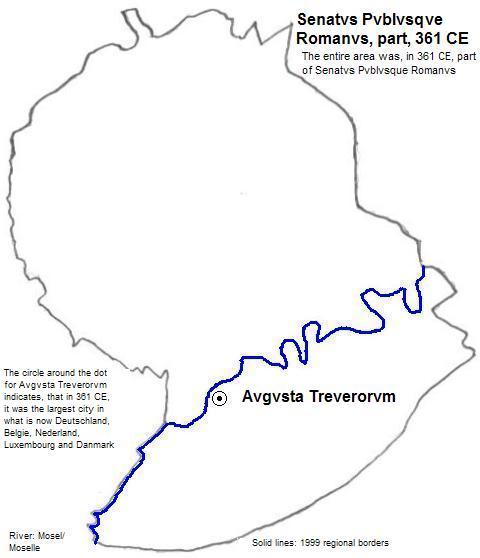
| To Duval Family Home Page | Europe | |
| To Chris Home Page | Deutschland, België, Nederland, Luxembourg and Danmark | |
| To Earth (Geography Home Page) |
Trier, formerly Avgvsta Treverorvm (or Augusta Treuerorum), and called Trèves in French, is situated along the Mosel River in Rheinland-Pfalz
| Year | Population | Political entity |
| 361 | 60,000 | Senatvs Pvblvsque Romanvs (Roman Empire) |
| 1000 | 20,000 | Regnum Francorum (Holy Roman Empire) |
| 1200 | 25,000 | Imperium Romanum Sacrum (Holy Roman Empire, although Trier was close to independent) |
| 1300 | 15,000 | Kurfürstentum |
| 1900 | 43,000 | Deutsches Reich (German Empire) |

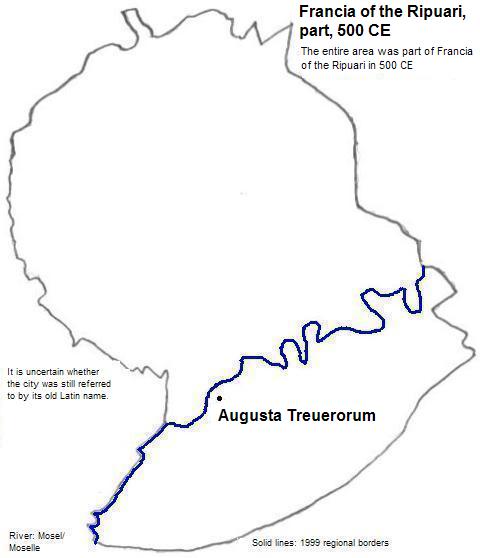
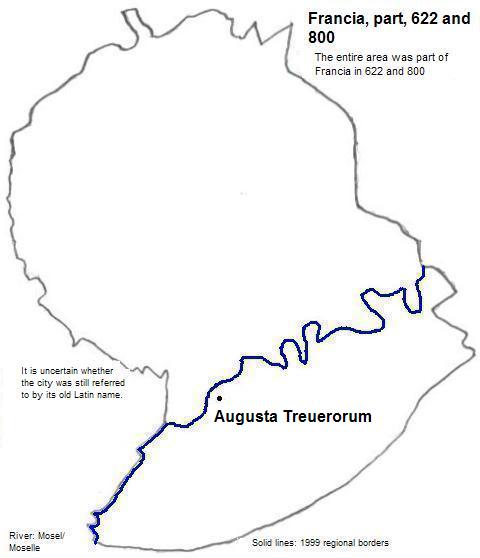
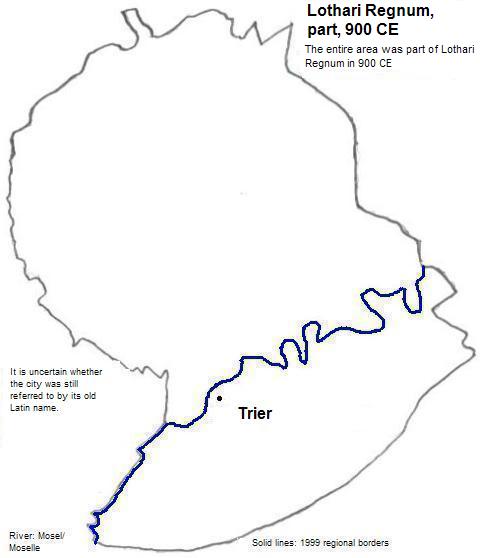
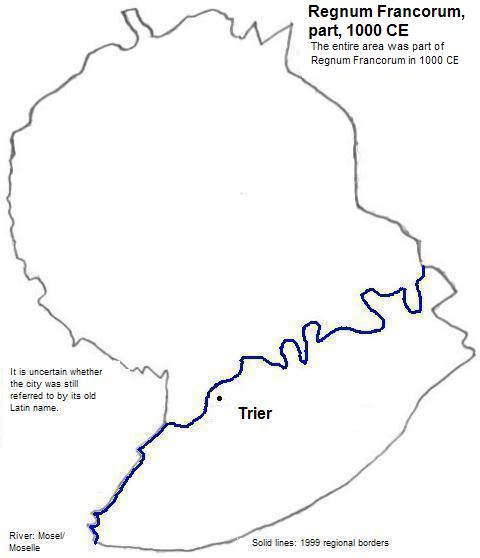
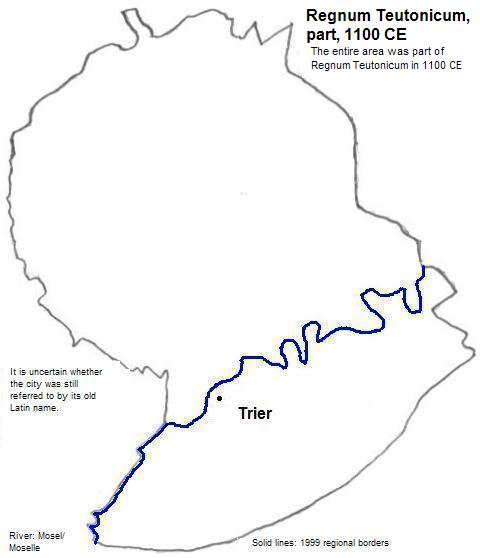
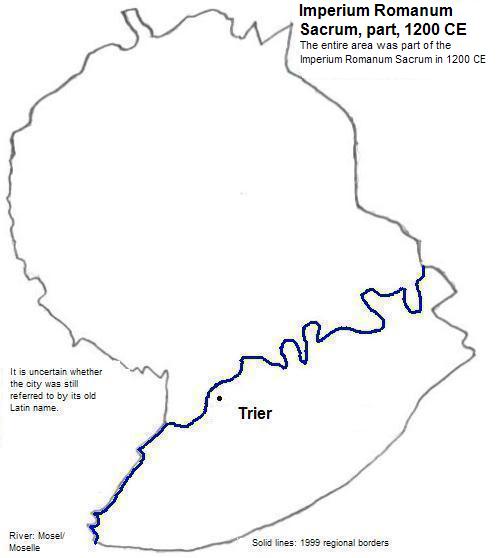
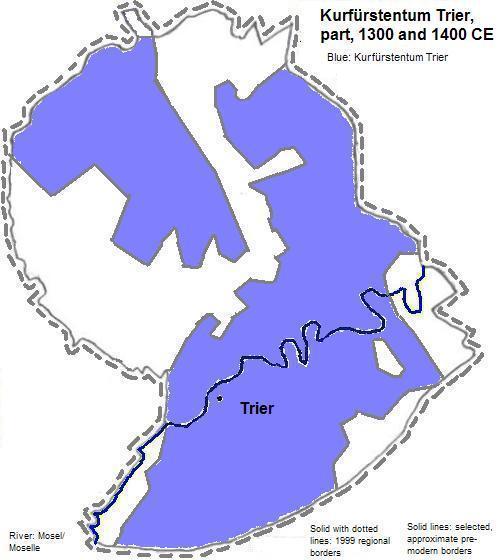
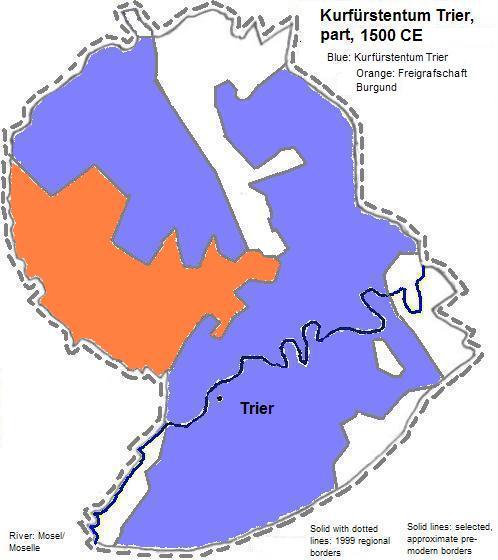

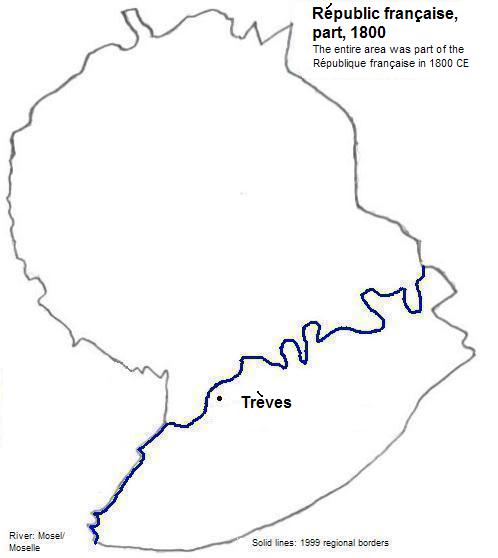
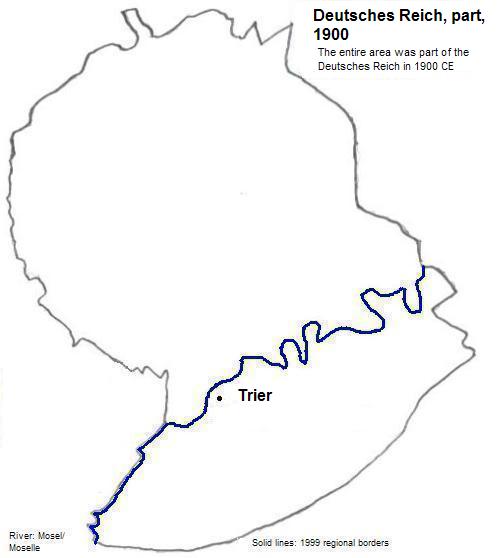
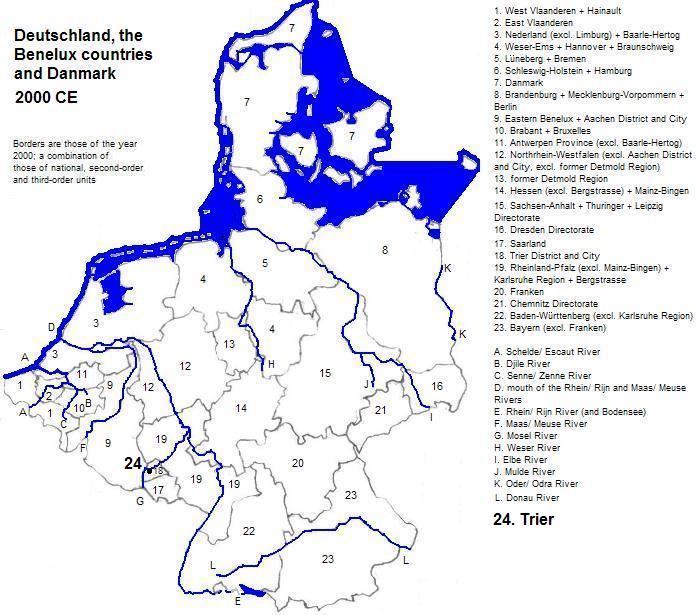
1. Rhineland Palitanate in English.
2. Germany in English.
3. Estimate in world-gazetteer.com, accessed 11/23/2010.
4. Emporis.com, accessed 11/23/2010.
5. The city's past is recognized as a World Heritage Site: Roman Monuments, Cathedral of St Peter and Church of Our Lady.
6. Estimates in Tables of the World's Largest Cities, or in Continental Tables and Maps: Europe, both in Tertius Chandler, Four Thousand Years of Urban Growth, 2nd ed. (The Edwin Mellen Press, 1987). In 361 Trier (Avgvsta Trevervm) was the largest city in what is now Deutschland, België, Nederland, Luxembourg and Danmark.
7. The Archbishop of Trier was also subordinate to the Pope in Roma, but in practice his feudal role was independent of papal direction.